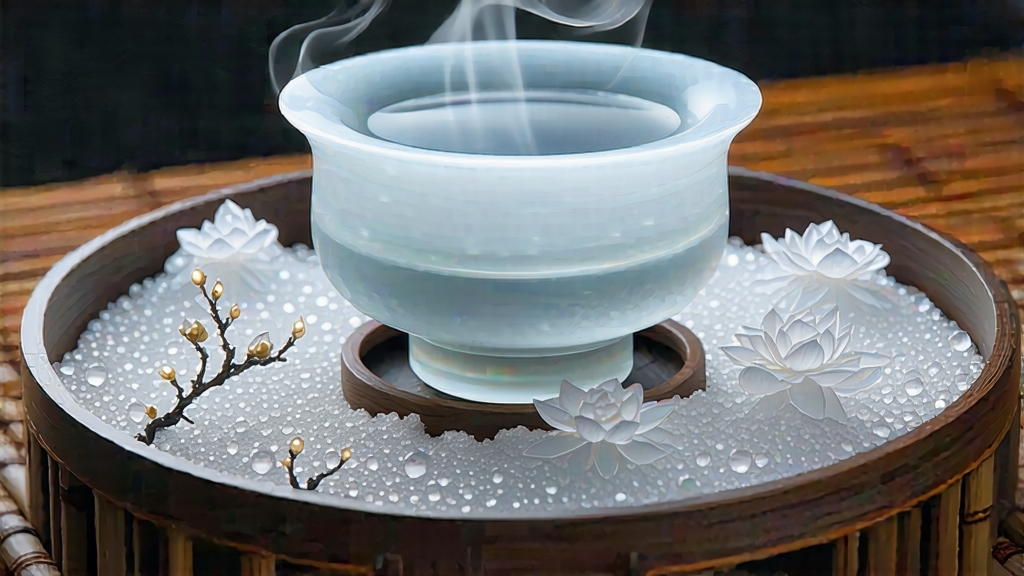
Among the six great families of Chinese tea, white tea is the least theatrical yet the most elusive; it is oxidised by air, not fire, and aged by time, not human haste. Within this minimalist lineage, Bai Hao Yin Zhen—translated globally as White-Hair Silver Needle—occupies the apex like a quiet monarch. Composed solely of unopened leaf buds plucked for only a few spring mornings each year, the tea carries the faint moonlight of Fujian’s coastal mountains in its downy silver coat and preserves, in its flavour, the sound of dew dropping off olive trees at dawn. To international drinkers who have met only grassy green teas or malt-heavy black teas, Silver Needle is often a first encounter with the idea that delicacy can possess depth, that subtlety can outlive power.
Historical whispers place the birth of bud-only white tea in the late Song dynasty, when imperial tribute commissioners demanded “the first sprout after winter, untouched by rain, wind, or blade.” The name Yin Zhen, literally “silver needle,” first appears in a 1796 county gazetteer from Fuding, the volcanic hinterland whose red sandy loam and maritime fogs proved uniquely hospitable to the Da Bai (Big White) tea cultivar. For almost two centuries the buds were compressed into cakes and shipped north along the Tea-Horse Road; only after 1891, when European merchants tasted the loose version at the Canton Trade Fair, did Silver Needle begin its voyage across oceans. In London it was nicknamed “China Down,” and in Tsarist Saint Petersburg it was prescribed by doctors as a “cooling” antidote to vodka. The 21st-century renaissance of specialty tea has merely restored to Silver Needle the prestige it enjoyed before the upheavals of the twentieth century.
Strictly speaking, only two terroirs may legally label their buds Yin Zhen: Fuding and the neighbouring county of Zhenghe, both in Fujian province. Within each county micro-zones matter. The Taimu mountain range, a spine of weathered granite, forces sea clouds to linger at 600–800 m, creating a diurnal swing of 10 °C that slows bud growth and concentrates amino acids. Growers speak of “three clouds a day” as the ideal: morning mist, noon sea cloud, and evening mountain fog. Further west, Zhenghe’s higher peaks and clay-loam soil yield sturdier buds with a slightly tannic spine, prized by blenders who age white tea for post-fermentative complexity. Purists, however, insist that only the coastal minerality of Fuding can produce the tea’s signature “stone-fruit whisper.”
Plucking rules are non-negotiable: one bud, no leaf, no wind-break, no insect bite. Pickers work the day after the first spring thunder, when nitrogen flushed by lightning has greened the tea hedgerows overnight. Baskets must be shallow to prevent bruising; fingernails must be trimmed because the bud’s protective cilia can be crushed by a careless grip. A skilled picker gathers barely 500 g of fresh buds in a dawn shift; 30 000 buds are required for one liang (50 g) of finished tea. Such arithmetic explains why authentic Silver Needle costs more than many grand cru wines by weight.
The craft that follows picking is disarmingly simple yet maddeningly precise: wither, bake, sort, rest. Fresh buds are spread on bamboo trays 2 cm thick and left under a roofed courtyard where gentle airflow—not direct sun—removes 70 % of their moisture within 36 hours. During this seemingly idle interval, endogenous enzymes convert catechins into theaflavins and release a honeyed precursor that will later translate into peach skin aroma. Every two hours the tea master lifts a tray to his ear and shakes it; the rustle must sound like “a pigeon folding its wings,” neither damp nor brittle. When the bud’s spine snaps at a 45° angle, the tea is rushed to a charcoal-heated chamber where pine-free hardwood embers hold 40 °C for twenty minutes, halting oxidation exactly at 5–8 %. A final hand-sorting discards any bud whose tip has browned, ensuring the luminous silver colour that gives the tea its name. The tea is then left for a “moon-cycle” of 28 days so that residual moisture migrates outward; only now is